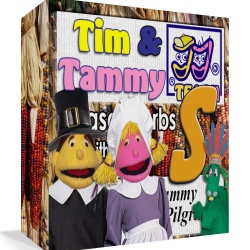Na semana passada, assisti uma entrevista do Ministro das Relações Exteriores do Brasil, Ernesto Araújo, à Fox Business. Nessa conversa curta, o Ministro Ernesto, que fala inglês muito bem por sinal, usou um phrasal verb que começa com a letra S, o phrasal verb stand for. Já que eu lhe ensinei o phrasal verb stand up for, que é muito semelhante, vamos aprender a diferença entre stand for e stand up for no episódio de hoje.
 Todos os Episódios do Mini-Podcast “Inglês Todos os Dias” de 2019 e 2020 CLIQUE AQUI
Todos os Episódios do Mini-Podcast “Inglês Todos os Dias” de 2019 e 2020 CLIQUE AQUI
FRASES NO MINI PODCAST DE HOJE:
“Mainstream, so to say, doesn’t like President Trump, doesn’t like President Bolsonaro, because they know what we stand for. We stand for, basically, ruling for the people. That should be what democracy is about.”
“Yeah, that’s a big concern for us. We want to stand for freedom across the hemisphere.”
stand for
They know what we stand for.
The red stands for the blood that was shed for our freedom.
What does EUA stand for?
EUA stands for Estados Unidos da America.
I don’t know what ideas their party stands for.
We stand for ruling for the people.
We want to stand for freedom.
Our country stands for ________________________.
The Untied States stands for opportunities for all.

Clique AQUI
—–===(*)===—–
Let’s use the phrasal verb “stand for” in the comments section below. Fill in the blank:
I stuck up for ______________________________ when ____________________________________ .


The audio is muted.
Thank you. I fixed it.
Hi Tim,
There was a problem with the audio recording of this class…
It’s fixed now. Thank you.
Hi Tim!
There might be a problem with the audio. I can’t listening to it. Anyway, “stand up for” means to defend/advocate someone or something. I think that “stick up for” has similar meaning.
Many thanks and see you around Tim.
Greetings from Spain
Thank you, Vera. I think it is corrected now.
Great Job Tim!
I´m follow you every time! I will share this post in my facebook.
Thank you, Jeff!
A new president of Brazil stand for democracy without corruption.
🙂 b
I think this site should not stand for any mention about policy
I am just putting thumbs up (:-) b) for the use of the phrasal verb “stand for”. Learn the expression, but I might remove the comments if people don’t behave here. Like I said in a comment in another tip, I I am very fair in these podcasts. I have podcasts with Obama, Hillary, Bush, Trump, etc. We are here to learn English. And I used a Brazilian minister. In each situation, I try to respect the office, at least.
Finally our country is standing for ruling for the people and for making right choices in terms of approaching and getting connections with the right countries!!!
😀 b
Now, our country stands for sincere optimism about the future! God above all!
🙂 b
The ONGs stands for animal rights.
😀 b
Our country stand for the brazilian people.
😀 b
Our country stands for more opportunities of freedom and fight for our families.
😀 b
Our country stands for diferent cultures.
🙂 b
Brazil stands for the strenght of brazilian people
😀 b
Our country stands for corruption about political
`:-) b
The corrupt misrule of Bolsonaro and Araujo stands for our country surrended to the wild interests of the capitalist domain.
🙂 b
Our country stands for mix of all world people.
Yes, Brazil is a melting pot for a wide range of cultures.
Our country stands for corrupt military, evangelicals and police
`:-) b
I Stand for freedom religion and politics
🙂 b
Our country stands for religious freedom.
😀 b
please, don’t think brazil stand for just football and carnaval.
`:-) b
The Brazil stand for the women’s freedom.
🙂 b
Brazil stands for a freedom life
😀 b
I can’t stand the bunch of lies that the politicians tell just to make-believe they stand for that what the people of our country really need
Good! You used “stand” in two different ways.